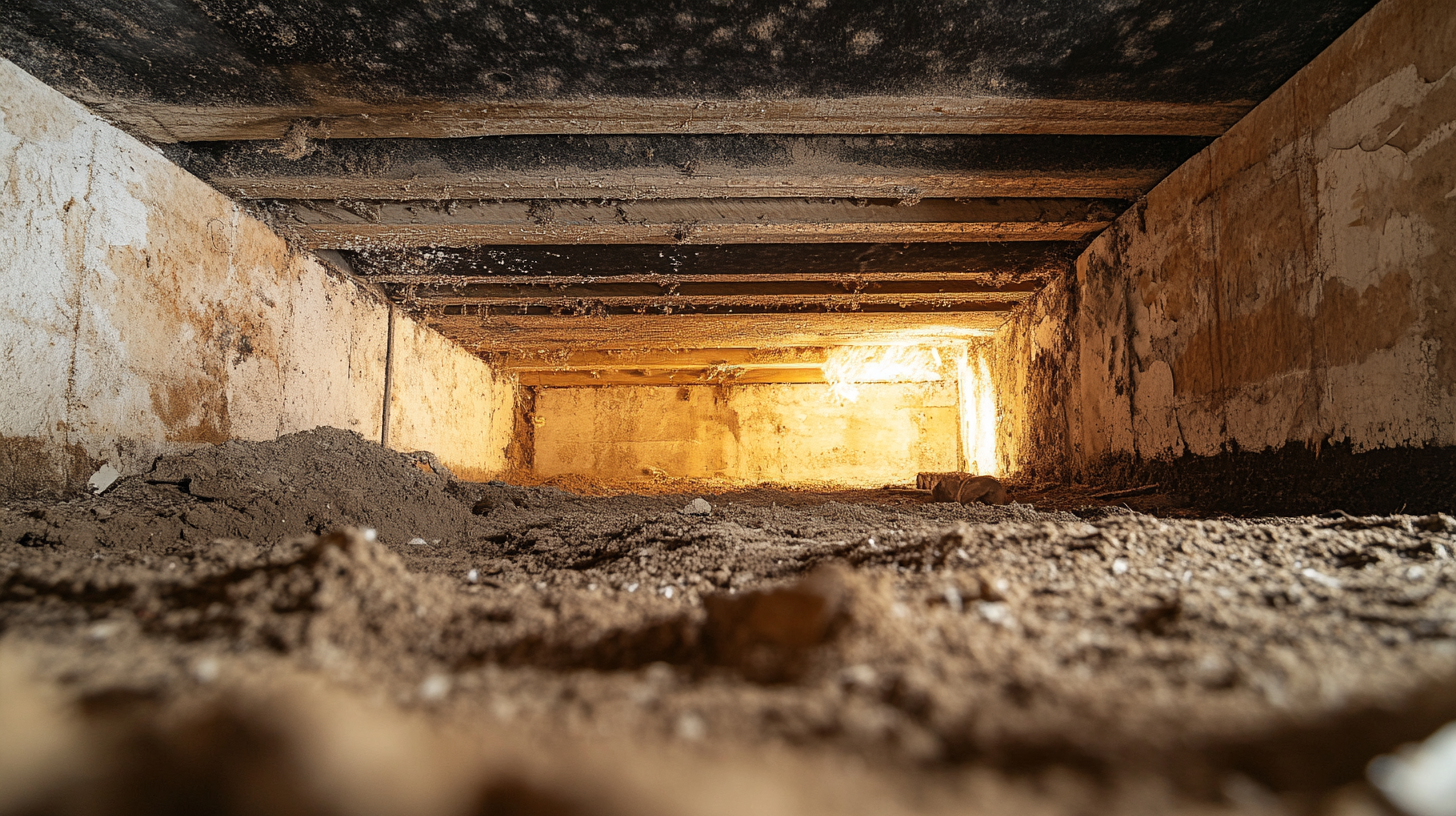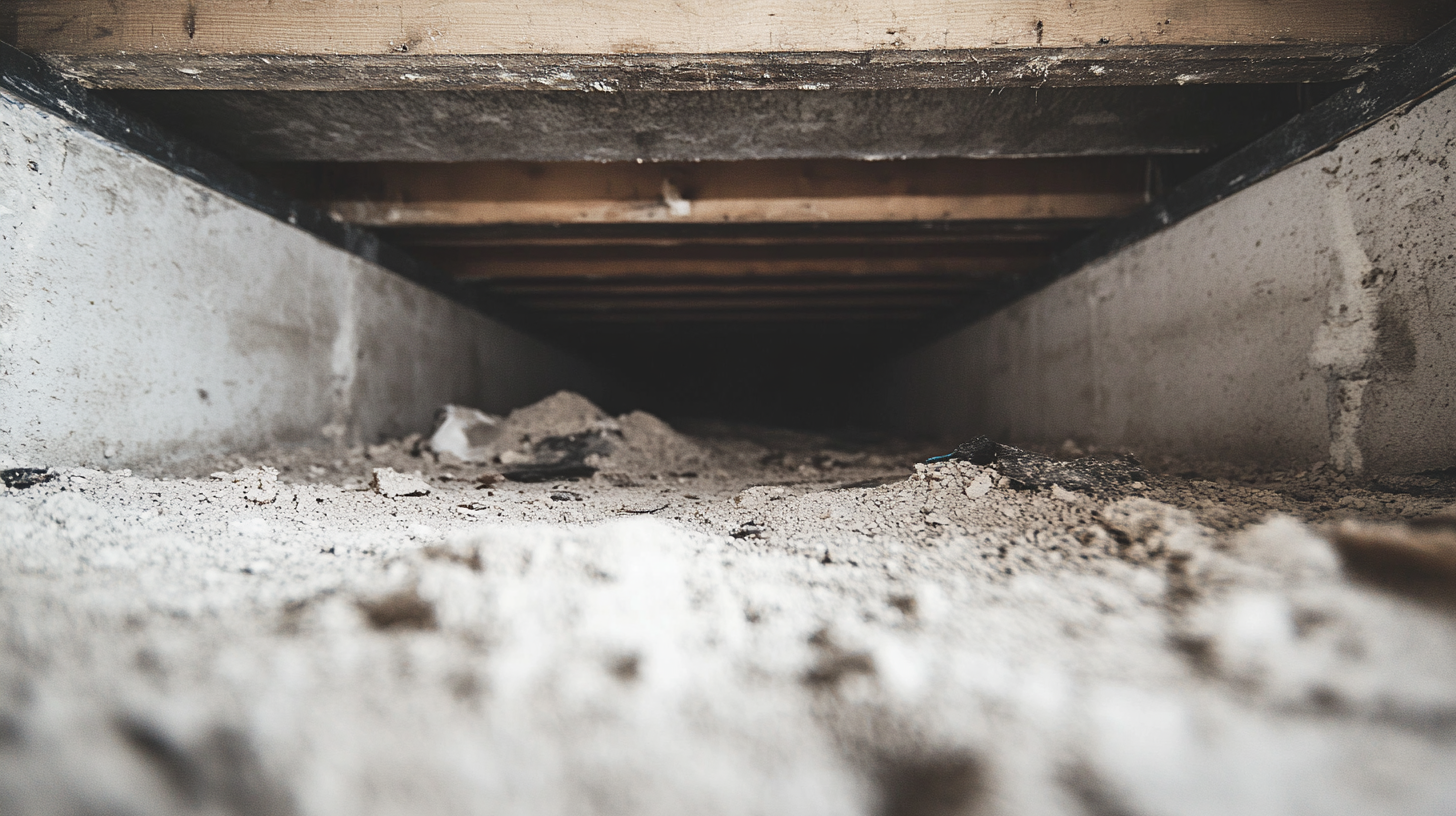Soot and Electronics: Cleaning and Prevention Strategies

In our modern world, electronic devices are ubiquitous, serving as the backbone of daily communication, work, and entertainment. Yet, these critical tools are vulnerable to an array of environmental pollutants, among which soot stands out as a silent but potent threat. Soot, a byproduct of the incomplete combustion of organic materials such as wood, oil, and gas, consists of fine carbon particles that can infiltrate and accumulate in electronic devices, leading to potential damage and malfunction.
While the presence of soot is often associated with industrial environments, urban settings, or areas prone to wildfires, it's important to recognize that indoor activities, including cooking and using fireplaces, can also contribute to soot levels in the home or office environment. The microscopic size of soot particles allows them to easily bypass filters and seals, settling on and within electronic devices where they can wreak havoc on the delicate internal components.
The impact of soot on electronic devices is multifaceted. It can lead to electrical shorts, corrode metal contacts, and obstruct cooling systems, thereby reducing the efficiency and lifespan of these devices. Moreover, the acidic nature of some soot particles can accelerate the degradation of materials, further compromising device integrity.
Understanding the ways in which soot can affect electronic devices is the first step in mitigating its impact. This blog aims to shed light on the mechanisms of soot damage, offering insights into how individuals and businesses can protect their valuable electronic assets from this pervasive environmental pollutant. By exploring prevention strategies and cleaning tips, we can help ensure that our reliance on electronic devices remains uninterrupted by the unseen threat of soot accumulation.
Understanding the Impact of Soot on Electronics
In the digital age, electronic devices are indispensable, powering everything from household appliances to sophisticated computing systems. However, these devices are not immune to environmental pollutants, particularly soot, which can significantly compromise their functionality and longevity. Understanding the nature of soot and its interaction with electronic components is crucial for mitigating risks and safeguarding our technological investments.
The Nature of Soot and Its Interaction with Electronics
Soot is composed of tiny carbon particles produced by the incomplete combustion of organic materials, such as fossil fuels, wood, and other carbon-based substances. These particles are not only minuscule, allowing them to infiltrate the smallest crevices of electronic devices, but they also carry various compounds, including acids, chemicals, and metals, which can enhance their conductive and corrosive properties.
When soot particles settle on electronic components, they can disrupt the normal function in several ways:
- Conductivity: Soot particles can create unintended conductive paths between components, leading to short circuits and malfunctions. This is particularly problematic in densely packed circuit boards where precise electrical flows are critical.
- Corrosion: The acidic components within soot can accelerate the corrosion of metal parts, including contacts and solder joints. Over time, this can weaken connections and lead to component failure.
- Thermal Insulation: A layer of soot on electronic components can act as an insulator, trapping heat and preventing proper cooling. Excessive heat buildup can reduce the efficiency and lifespan of electronic devices.
Risks of Soot Accumulation in Electronic Devices
The accumulation of soot in electronic devices poses several risks, not only to the devices themselves but also to the data and functionalities they support:
- Hardware Damage: Soot can cause irreversible damage to electronic hardware, necessitating costly repairs or replacements. In severe cases, devices may become completely inoperable.
- Data Loss: Devices affected by soot-related damage can experience data corruption or loss, which can be devastating for businesses and individuals alike, especially if backups are not available.
- Reduced Performance: Even minor soot accumulation can lead to a decrease in device performance, as components struggle to function under the added stress of contamination and overheating.
- Increased Maintenance Costs: The need for frequent cleaning and maintenance to address soot accumulation can result in higher operational costs over the lifespan of electronic devices.
Understanding the impact of soot on electronics underscores the importance of preventive measures and regular maintenance to protect these vital devices. By recognizing the ways in which soot interacts with electronic components, individuals and businesses can take proactive steps to minimize risks and ensure the continued reliability and performance of their electronic devices.
Preparing for Soot Removal from Electronics
The infiltration of soot into electronic devices can lead to significant performance issues and potential damage. Addressing this problem requires a careful and informed approach to ensure that the cleaning process does not exacerbate the situation. Preparing for soot removal involves taking essential safety precautions, properly disassembling devices, and gathering the appropriate cleaning supplies. This preparation is crucial for the successful restoration of electronics affected by soot accumulation.
Safety Precautions and Initial Steps
Before embarking on the cleaning process, it's imperative to prioritize safety—for both the individual performing the cleaning and the electronic device itself. Here are the initial steps and safety precautions to take:
- Power Down: Ensure that the device is completely powered off. Disconnect any power sources, including batteries, to prevent the risk of electric shock and to protect the device's components during cleaning.
- Disassembly: Carefully disassemble the device as much as your skill and the device's design allow. Removing covers and external casings can provide better access to soot-affected areas. Refer to the device's manual or online tutorials for guidance on disassembly without causing damage.
- Protective Gear: Wear protective gear, including gloves and a face mask or respirator. This gear protects you from inhaling soot particles, which can be harmful, and from coming into direct contact with potentially irritating cleaning agents.
- Clean Workspace: Prepare a clean, well-lit, and well-ventilated workspace. A clear area prevents the introduction of additional contaminants and provides ample space for organizing disassembled parts.
Gathering Necessary Cleaning Supplies
Having the right cleaning supplies is essential for effectively removing soot from electronics without causing damage. Here's a list of recommended tools and cleaning agents:
- Isopropyl Alcohol: A high-purity isopropyl alcohol (preferably 90% or higher) is effective for cleaning electronic components. It evaporates quickly, minimizing moisture exposure.
- Compressed Air: Cans of compressed air can blow away loose soot particles from delicate components without physical contact.
- Soft Brushes: Soft, anti-static brushes can gently remove soot from circuit boards and other components. Toothbrushes or paintbrushes with soft bristles are suitable alternatives.
- Cotton Swabs: Cotton swabs dipped in isopropyl alcohol can clean hard-to-reach areas and detailed components.
- Microfiber Cloths: Use lint-free microfiber cloths for wiping surfaces. These cloths do not leave residue and are gentle on sensitive components.
- Plastic Containers: Small plastic containers or trays can hold disassembled parts, keeping them organized and preventing loss.
Preparing for soot removal from electronics with the appropriate safety measures and cleaning supplies is the first step toward restoring your devices to optimal functionality. By carefully following these guidelines, you can ensure a safe and effective cleaning process, protecting both your health and the integrity of your electronic devices.
Step-by-Step Guide to Cleaning Soot from Electronics
The presence of soot within electronic devices can impair their functionality and shorten their lifespan. Removing soot requires precision and care to avoid further damage. This step-by-step guide outlines effective techniques for cleaning soot from both the internal components and external surfaces of electronic devices, ensuring they continue to operate efficiently.
Removing Loose Soot Particles
The first step in the cleaning process is to remove any loose soot particles without spreading them further or pushing them deeper into the device.
- Compressed Air: Begin by using cans of compressed air to gently blow away loose soot from the device's interior. Keep the nozzle at a safe distance to avoid damage from the air pressure and aim to direct the soot out of the device, not deeper into it.
- Soft Brushes: Soft, anti-static brushes can be used to dislodge soot particles from circuit boards and other components. Gently brush away from sensitive areas, such as connectors and sockets, to prevent soot from accumulating in crevices.
Cleaning Internal Components
Once loose soot has been removed, focus on cleaning the soot from circuit boards and internal parts. This step requires a delicate touch and the right cleaning agents.
- Isopropyl Alcohol: Dampen a cotton swab or a soft cloth with high-purity isopropyl alcohol (at least 90%) and gently clean the soot from the circuit boards and internal components. The alcohol will help dissolve the soot without damaging the electronics and evaporates quickly to minimize moisture exposure.
- Detailing with Cotton Swabs: Use cotton swabs to reach tight spaces and detailed areas. Be careful not to leave cotton fibers behind, as they could interfere with the device's operation.
- Rinse and Repeat: For stubborn soot stains, you may need to repeat the cleaning process several times. Always allow the alcohol to evaporate fully before reapplying.
Addressing Soot on External Surfaces
Cleaning the external surfaces of electronic devices not only restores their appearance but also prevents soot from being transferred back inside the device.
- Microfiber Cloths: Use a dry microfiber cloth to wipe down screens, casings, and external connectors. Microfiber is effective at capturing soot particles without scratching the surfaces.
- Damp Cleaning: For more stubborn soot marks, lightly dampen a microfiber cloth with a mixture of water and mild detergent. Gently clean the affected areas, being careful not to allow moisture to seep into openings or ports.
- Final Rinse and Dry: Use a clean, damp cloth to wipe away any detergent residue, followed by a dry microfiber cloth to remove moisture. Ensure the device is completely dry before reassembly or use.
Cleaning soot from electronics is a meticulous process that, when done correctly, can significantly extend the life and functionality of your devices. By following these step-by-step instructions, you can safely and effectively remove soot, preserving the integrity and performance of your valuable electronics.
Do's and Don'ts of Soot Removal from Electronics
Removing soot from electronic devices is a delicate task that requires careful consideration to avoid further damage. Soot, a byproduct of incomplete combustion, can significantly impair the functionality and longevity of electronics. To ensure safe and effective cleaning, it's essential to adhere to best practices while avoiding common mistakes that could exacerbate soot damage or harm electronic components.
Best Practices for Safe and Effective Cleaning
Do:
- Do Power Down the Device: Always ensure the device is completely powered off and unplugged before attempting any cleaning. This reduces the risk of electrical shock and damage to the device.
- Do Use the Right Tools: Employ soft brushes, compressed air, and microfiber cloths for removing soot. These tools are gentle on electronics and effective at capturing soot particles.
- Do Opt for Isopropyl Alcohol: For tougher soot stains, use a high-purity isopropyl alcohol (90% or higher) applied with a cotton swab or lint-free cloth. It's effective at breaking down soot without leaving residue.
- Do Work in a Well-Ventilated Area: To avoid inhaling soot or chemical fumes, clean electronics in an area with good airflow or use protective gear like masks.
- Do Be Patient and Gentle: Take your time with the cleaning process, and be gentle with the device. Rushing or applying too much force can cause unnecessary damage.
Don't:
- Don't Use Water or Aqueous Solutions: Introducing water to electronic devices can lead to corrosion and short circuits. Stick to alcohol-based cleaners that evaporate quickly.
- Don't Apply Direct Pressure to Components: When cleaning with brushes or cloths, apply light pressure to avoid damaging sensitive components or dislodging connections.
- Don't Ignore Manufacturer's Guidelines: Consult the device's manual or manufacturer's website for specific cleaning recommendations and warnings.
- Don't Use Abrasive Materials: Avoid using anything abrasive, such as paper towels or rough cloths, that can scratch screens or delicate surfaces.
- Don't Rush the Drying Process: Allow the device ample time to air dry after cleaning with isopropyl alcohol. Using heat sources to speed up drying can cause damage to sensitive components.
Common Mistakes to Avoid
- Ignoring Electrostatic Discharge (ESD) Precautions: Failing to ground yourself before handling electronics can result in ESD, which can silently damage electronic components. Use an ESD wrist strap or work on an anti-static mat.
- Cleaning Powered-On Devices: Attempting to clean a device that's still powered on increases the risk of electrical shock and damage to both the cleaner and the device.
- Overlooking Hidden Soot Deposits: Soot can accumulate in hard-to-see places. Neglecting these areas can lead to overheating and malfunction.
- Using Compressed Air Improperly: Blasting compressed air too closely or with too much force can drive soot deeper into the device or damage components. Always use compressed air with caution and from a safe distance.
By adhering to these do's and don'ts, you can effectively remove soot from electronics, preserving their functionality and extending their lifespan. Remember, the goal is not only to clean the device but to do so in a way that ensures its continued safe and effective operation.
Preventive Measures to Protect Electronics from Soot
Soot, a pervasive byproduct of combustion, poses a significant risk to electronic devices, potentially impairing their functionality and reducing their lifespan. While cleaning soot from electronics is possible, preventing its accumulation in the first place is a more effective strategy for ensuring the longevity and reliability of these devices. Implementing environmental controls and utilizing protective enclosures and storage solutions can significantly reduce the risk of soot damage. Here's how to protect your electronics from soot and other pollutants.
Environmental Controls
Maintaining clean air in environments where electronics are used is crucial for minimizing soot exposure. Here are several recommendations for environmental controls:
- Air Purification: Use air purifiers with HEPA filters to capture soot and other fine particulate matter. Positioning air purifiers strategically in areas where electronics are heavily used can help maintain cleaner air.
- Ventilation: Ensure adequate ventilation in rooms containing electronics. This can involve using exhaust fans, opening windows to allow fresh air circulation, or installing ventilation systems designed to filter out pollutants.
- Source Control: Minimize activities that produce soot indoors, such as burning candles, smoking, or using unvented fuel-burning appliances. Opt for electric heating options and LED lighting to reduce combustion byproducts.
- Regular HVAC Maintenance: For buildings with HVAC systems, regular maintenance, including changing air filters frequently, can prevent soot from circulating through air ducts and settling on electronic devices.
Protective Enclosures and Storage Solutions
Protective cases and storage solutions offer a physical barrier against soot, dust, and other environmental pollutants. Here are tips for using these protective measures effectively:
- Protective Cases: Invest in high-quality protective cases for portable electronics. Look for cases that offer a snug fit and have dust and moisture-resistant features. For larger equipment, consider custom enclosures that allow operation while providing protection.
- Dust Covers: When not in use, cover desktop computers, printers, and other stationary electronics with dust covers. This simple measure can prevent soot and dust from settling on and inside the devices.
- Sealed Storage: For electronics that are seldom used, store them in sealed containers or bags with silica gel packets to absorb moisture. This storage method is particularly useful in areas prone to high soot or dust levels.
- Clean Storage Areas: Regularly clean shelves, cabinets, and other storage areas where electronics are kept. This reduces the overall soot and dust load that could potentially infiltrate stored devices.
Implementing these preventive measures can significantly protect electronics from the damaging effects of soot accumulation. By controlling the environment and utilizing protective enclosures and storage solutions, you can extend the life of your electronic devices, ensuring they remain functional and reliable for years to come.
FAQs
Contact Fast Response Cleaning & Restoration Today!
Fast Response Cleaning & Restoration will do everything we can to ensure your experience with us is excellent.
Request A FREE Estimate
Request A FREE Estimate Form
CHECKOUT RECENT POST



Have an Emergency? We're Here to Help!
When it comes to disaster cleanup, we are a seasoned veteran in the industry and have helped hundreds of property owners just like you.
Our disaster recovery teams are available 24-7 to quickly clean up and repair disasters of all types.
